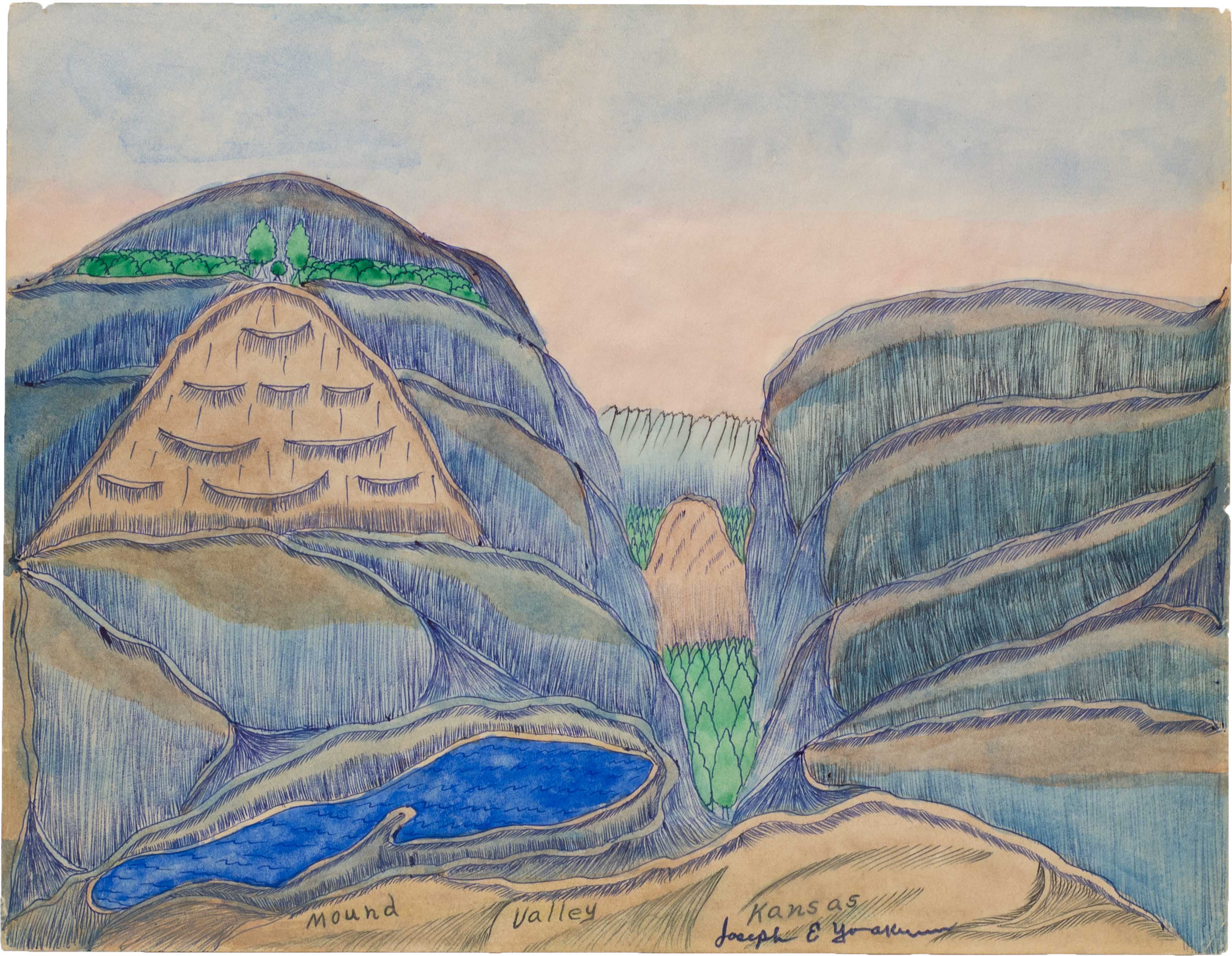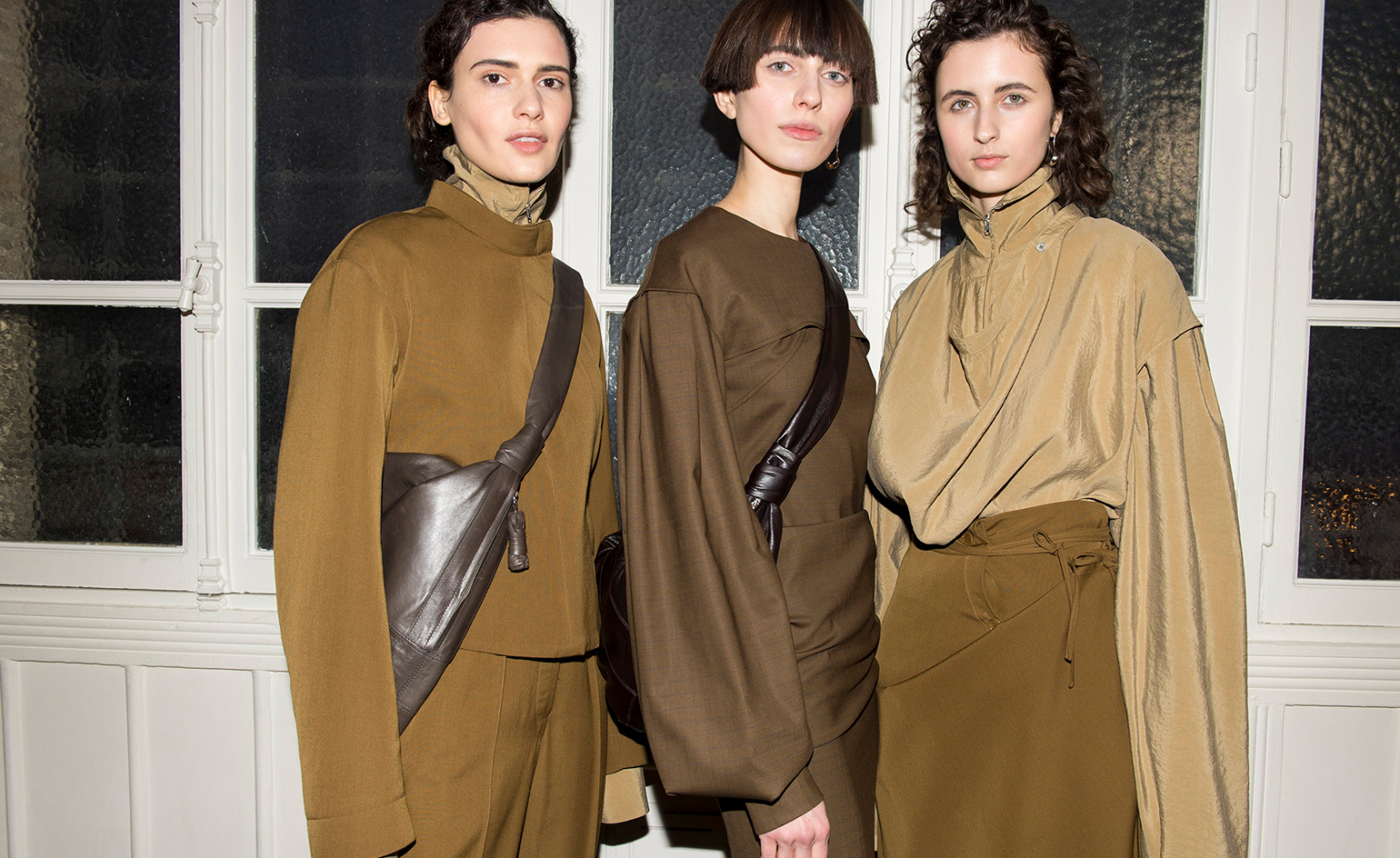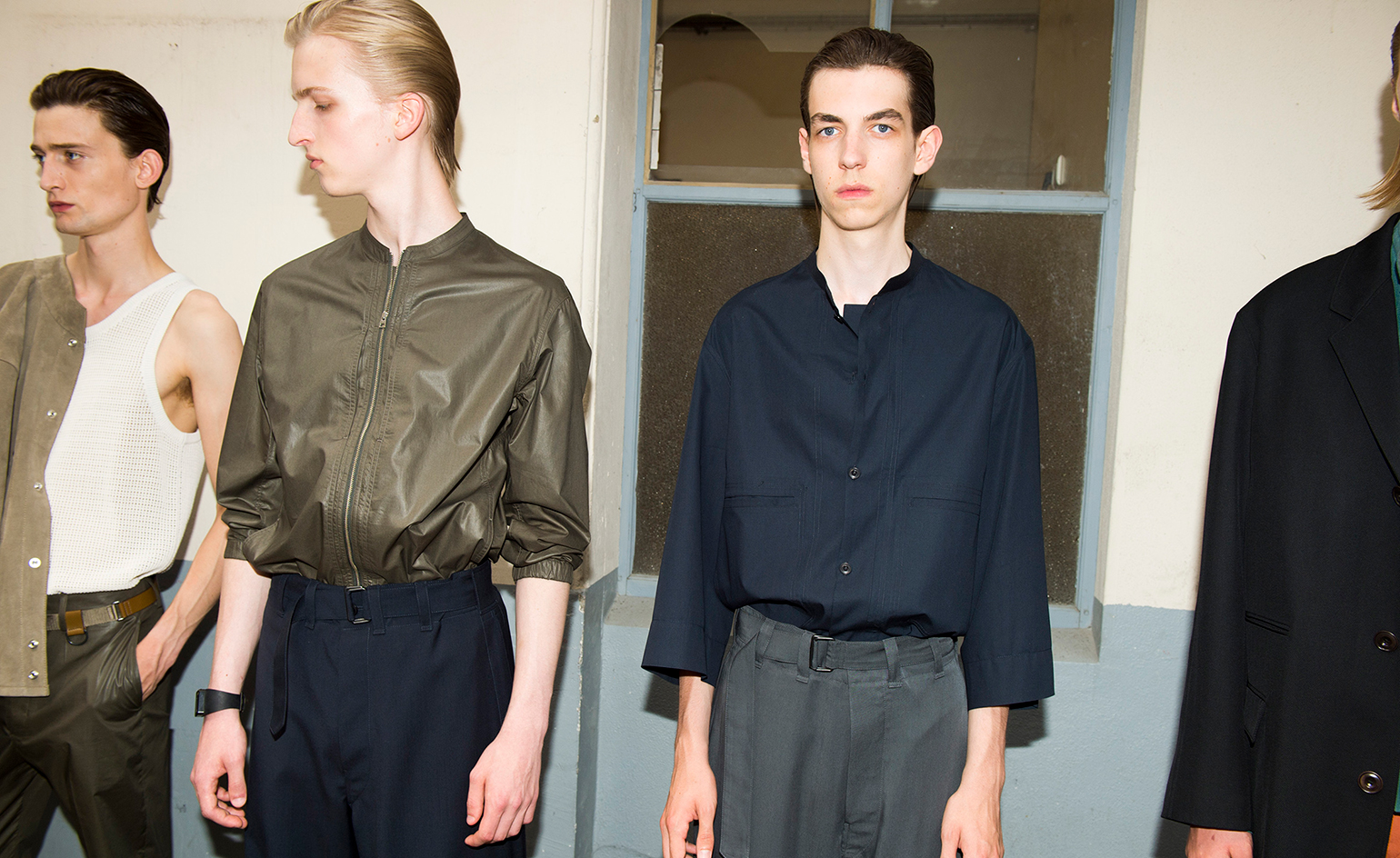Lemaire celebrates Joseph E Yoakum's ‘spiritual unfoldments’
Works by Native American folk artist Joseph E Yoakum inspire a capsule collection by Lemaire and go on show during Paris Fashion Week; we speak to the label’s founders

Jean-Marie Binet
Sarah-Linh Tran – one half of Paris-based label Lemaire – discovered Native American folk artist Joseph E Yoakum when she was an intern at abcd/Art Brut gallery in Montreuil. Using ballpoint pen and coloured pencil, Yoakum began drawing flat, mythical scenes in the last decade of his life, describing them as ‘spiritual unfoldments’. As the first major assessment of his work in 25 years hangs at MoMA in New York, Lemaire has produced a capsule wardrobe using four of Yoakum’s drawings. The label has also supported a Paris exhibition of 14 works that is now open at Galerie Derouillon (until 13 March 2022).
Here, Tran and co-founder Christophe Lemaire open up about the allure of the elemental and the magic of making.
Lemaire co-founders on Joseph E Yoakum and their new collection

Joseph E Yoakum
Wallpaper*: Yoakum’s biography is filled with lots of different stories and is somewhat unclear. It’s just as hazy as one of his landscapes. What difference did this make to your understanding of the work?
Christophe Lemaire: I deep dived into his life, and I was first impressed by the beauty of his work, the beauty of the colours above everything. Then, learning more about the spiritual dimension was fascinating. His is a genuine celebration of the beauty of nature, geology, and the landscape.
Sarah-Linh Tran: We don’t care whether his landscapes are dreamed or real. His illustrated surveys delve deep into personal history, collective unconscious, and beyond. The paintings are open… they spark your imagination.
W*: How did you select the works you used within the collection?
CL: It was very much based on how they could be printed and cut in a satisfying way whilst respecting the spirit of the work, the format, and the dimensions.
S-LT: The shapes are quite geometric, which create this unfolded reading of the drawings. We really liked the idea of opening the garment as you would open a paper map to find your way or get lost down possible paths.

W*: You worked with a fabric base that recalls the matte aspect of the original paper – what other design considerations did you have to make?
S-L: We worked hard to reproduce original colours as precisely as possible and developed shapes that allow the reading of the drawings with ease. We also immediately thought it would be important to organise an exhibition to show Joseph’s works independently from the capsule collection.
Receive our daily digest of inspiration, escapism and design stories from around the world direct to your inbox.
DC: How much does Yoakum’s position as an ‘outsider artist’ interest you? I know you have been interested in Art Brut, the term invented by Jean Dubuffet to describe ‘raw art’, for a long time.
S-L: I’m not comfortable with the expression ‘outsider art’ because it tends to stigmatise the artist sociologically. I think that ‘Art Brut’ allows a more open approach. ‘Art Brut’ artists are foreign to the culture of the fine arts, foreign to the rituals and places that facilitate it. Their art is necessary and complex.
CL: I’m very sceptical about a lot of contemporary art because most of the time you can feel so much calculation and commercial strategy behind it. But ‘outsider art’, or ‘folk-art’ – whatever one wants to call it, art that is not being conscious of being art – has this genuine quality. It has a truth that is so often lacking in the official art business.

W*: How do Joseph’s works make you feel about the world we are in right now?
CL: The interesting thing about ‘outsider art’ is that it breaks prejudice regarding social, gender or racial background. Also, this idea that ‘unqualified’ people, people without an ‘official legitimacy’, would show the richness and depth of their soul and imagination with a fascinating aesthetic point of view.
S-L: Totally. Joseph reminds us of the importance of imagination and memory.
W*: A religious experience first led him to start making art in the early 1960s. He said: ‘The drawings are unfolded to me, a spiritual unfoldment. After I draw them, I have a spiritual remembrance and I know what is pictured.’ This spirituality was crucial to the making of these works. What is the process of fashion-making like for you? You offer seasonal propositions for a wardrobe.
S-L: Designing is observing people, gestures. It’s being empathic to the people you will dress. It’s about being curious. Hopefully, these landscapes worn by people will become conversation starters between two strangers.
CL: We are dreamers! Dreaming of making everyday life a little bit better. The point is to start from the reality of everyday life, but we are Idéalistes de la réalité – ‘reality idealists’. We’re sceptical about the contemporary obsession with virtual reality, which is a vain and immature attempt to escape from reality. It only produces superficial distractions, absurdity, and ugliness. It’s like looking into a gigantic telescope, instead of looking directly at the ground under our feet. We need to relearn to care about the reality of the given world, to enrich our everyday experiences and watch the absolute beauty of untouched nature. This is what I feel when I look at Joseph’s work.









INFORMATION
‘Inscape’ – a show produced by Lemaire and supported by the Venus over Manhattan Gallery, Anna Furney and Adam Lindemann – is open at Galerie Derouillon, Paris until 13 March 2022
London based writer Dal Chodha is editor-in-chief of Archivist Addendum — a publishing project that explores the gap between fashion editorial and academe. He writes for various international titles and journals on fashion, art and culture and is a contributing editor at Wallpaper*. Chodha has been working in academic institutions for more than a decade and is Stage 1 Leader of the BA Fashion Communication and Promotion course at Central Saint Martins. In 2020 he published his first book SHOW NOTES, an original hybrid of journalism, poetry and provocation.
-
 Why are Wayne Thiebaud’s paintings at the Courtauld quite so tempting?
Why are Wayne Thiebaud’s paintings at the Courtauld quite so tempting?The American artist’s thickly painted slices of cake at the Courtauld are some of our favourite artworks seen this year. What makes them so special?
-
 Taiwan’s new ‘museumbrary’ is a paradigm-shifting, cube-shaped cultural hub
Taiwan’s new ‘museumbrary’ is a paradigm-shifting, cube-shaped cultural hubPart museum, part library, the SANAA-designed Taichung Green Museumbrary contains a world of sweeping curves and flowing possibilities, immersed in a natural setting
-
 Dries van Noten on why he's building a new home for craft in Venice
Dries van Noten on why he's building a new home for craft in VeniceA year after departing the runway, Dries van Noten unveils his next chapter: the Fondazione Dries Van Noten, a newly announced cultural initiative in Venice celebrating craft in all its forms. Wallpaper meets the designer to find out why he’s not ready to retire.
-
 Paris Fashion Week Men’s A/W 2022: Louis Vuitton to Loewe, Dior to Hermès
Paris Fashion Week Men’s A/W 2022: Louis Vuitton to Loewe, Dior to HermèsIn this extended report, Laura Hawkins reveals 9 highlights from Paris Fashion Week Men's A/W 2022. Including: Virgil Abloh's final collection for Louis Vuitton; Rick Owen's riff on sleaze; elfin-inspired accessories; and a celebration of slouch and surrealism
-
 Lemaire A/W 2020 Paris Fashion Week Women's
Lemaire A/W 2020 Paris Fashion Week Women's -
 Lemaire S/S 2020 Paris Fashion Week Women's
Lemaire S/S 2020 Paris Fashion Week Women's -
 Lemaire S/S 2019 Paris Fashion Week Women's
Lemaire S/S 2019 Paris Fashion Week Women's -
 Lemaire A/W 2018
Lemaire A/W 2018 -
 Lemaire A/W 2018
Lemaire A/W 2018 -
 Lemaire S/S 2018
Lemaire S/S 2018 -
 Lemaire S/S 2017
Lemaire S/S 2017In flawless synergy, Christophe Lemaire and Sarah-Linh Tran present relaxed silhouettes and wearable layers